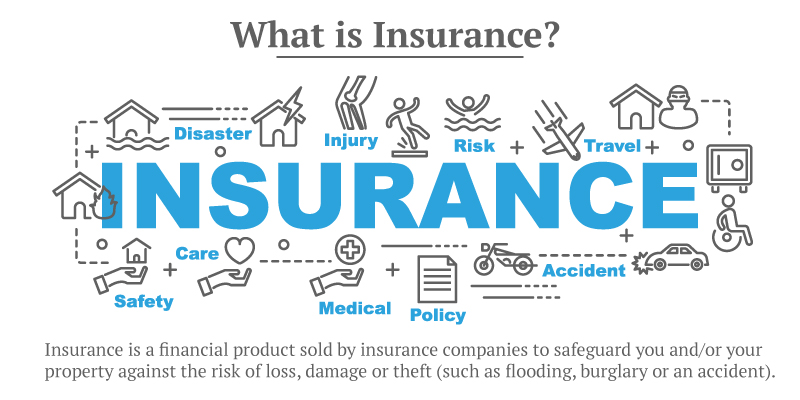Zero Depreciation vs. Return to Invoice: A Comprehensive Comparison
Introduction
When it comes to protecting your vehicle from potential financial losses, having the right insurance is crucial. While third-party insurance is mandatory in India, opting for a comprehensive cover provides additional protection for your vehicle. However, even comprehensive insurance plans have limitations when it comes to covering vehicle depreciation and the cost of ownership. This is where add-on riders like zero depreciation cover and return to invoice cover come into play. In this article, we will compare these two popular add-ons and help you understand their differences, benefits, and limitations.
Zero Depreciation Cover: Protecting Your Vehicle’s Value
Understanding Vehicle Depreciation
As your vehicle ages and experiences wear and tear, its value naturally depreciates. This depreciation is reflected in the market value of your vehicle. In the event of an accident, the insurance company considers this depreciation when assessing the claim amount. This means that you may have to bear a portion of the repair costs out of pocket. However, with a zero depreciation cover add-on, you can avoid these expenses and ensure that you receive the full claim amount.
How Zero Depreciation Cover Works
With a zero depreciation cover, also known as a nil depreciation or bumper-to-bumper cover, you can claim the entire repair cost without accounting for the depreciation of the vehicle’s parts. This means that even if your vehicle requires repairs or replacement of parts, you won’t have to bear any depreciation-related costs. The insurance company will cover the full expenses, ensuring that you don’t face any financial burden.
Benefits of Zero Depreciation Cover
The key benefit of zero depreciation cover is that it provides comprehensive protection for your vehicle. By eliminating the depreciation factor, you can claim the full value of the repairs or parts replacement. This add-on is particularly beneficial for new vehicles, as their parts are more expensive and prone to higher depreciation. Here are some advantages of opting for zero depreciation cover:
- Cost Savings: With zero depreciation cover, you can save on out-of-pocket expenses by avoiding depreciation deductions.
- Enhanced Coverage: This add-on ensures that your insurance policy covers the full cost of repairs or replacement, providing peace of mind.
- Quick Claim Settlement: Zero depreciation cover simplifies the claim settlement process by eliminating disputes over depreciation deductions.
- Extended Coverage: You can usually avail of zero depreciation coverage for up to five years from the date of purchasing your vehicle, offering long-term protection.
Limitations of Zero Depreciation Cover
While zero depreciation cover offers significant benefits, it does have certain limitations to consider:
- Premium Increase: Opting for zero depreciation cover will increase your insurance premium, as it provides enhanced coverage.
- Claim Limitations: Insurers may set limits on the number of zero depreciation claims you can file within a year.
- Deductibles: Some insurers may still apply mandatory and voluntary deductibles, which you need to pay before claiming the coverage.
Return to Invoice: Ensuring Maximum Compensation
Understanding Insured Declared Value (IDV)
In comprehensive insurance plans, the premium is based on the Insured Declared Value (IDV) of the vehicle. This IDV represents the approximate market value of the vehicle. In case of total loss or theft, the insurer compensates the policyholder based on the IDV. However, the IDV also considers depreciation, resulting in a lower claim amount. This is where the return to invoice cover comes into play.
How Return to Invoice Works
Return to invoice cover, also known as invoice protection cover or invoice reimbursement cover, ensures that you receive the full invoice value of your vehicle in case of total loss or theft. This means that the insurance company will reimburse you for the original purchase price, including registration charges and road tax. Return to invoice cover bridges the gap between the IDV and the actual purchase or invoice value of the vehicle.
Benefits of Return to Invoice
Return to invoice cover offers several advantages, especially for new vehicles or vehicles with high invoice values. Here are some benefits of opting for this add-on:
- Maximum Compensation: With return to invoice cover, you can receive the full invoice value of your vehicle, minimizing your financial loss.
- Protection Against Depreciation: By covering the difference between the IDV and the invoice value, this add-on protects you from depreciation-related deductions.
- Peace of Mind: Return to invoice cover ensures that you can replace your vehicle with a similar model without bearing any significant financial burden.
- Suitable for High-Value Vehicles: This add-on is particularly beneficial for vehicles with a high invoice value, as the difference between the IDV and the invoice value can be substantial.
Limitations of Return to Invoice
While return to invoice cover offers significant benefits, it’s important to consider its limitations:
- Limited Applicability: Return to invoice cover is typically applicable only if the cost of repairs exceeds 75% of the IDV and the vehicle is less than three years old.
- Higher Premium: Opting for return to invoice cover will increase your insurance premium significantly, as it provides extensive coverage.
- Shorter Coverage Period: Unlike zero depreciation cover, return to invoice cover is usually available for a maximum of three years from the date of vehicle purchase.
Comparing Zero Depreciation and Return to Invoice
Now that we’ve explored the individual features and benefits of zero depreciation cover and return to invoice cover, let’s compare them side by side:
| Aspect | Zero Depreciation Cover | Return to Invoice Cover |
|---|---|---|
| Coverage | Depreciation of repaired/replaced parts | Difference between IDV and invoice value |
| Claim Amount | Full repair/replacement cost | Full invoice value of the vehicle |
| Benefit Period | Up to 5 years from vehicle purchase | Up to 3 years from vehicle purchase |
| Applicability | All vehicles | Vehicles less than 3 years old and high-value |
| Premium Increase | Yes | Yes |
| Deductibles | Mandatory and voluntary deductibles may apply | Mandatory and voluntary deductibles may apply |
| Claim Limitations | Insurer-specific limits | N/A |
Conclusion
Both zero depreciation cover and return to invoice cover are valuable add-ons that offer additional protection for your vehicle. While zero depreciation cover ensures that you can claim the full repair or replacement cost without any depreciation deductions, return to invoice cover guarantees that you receive the full invoice value of your vehicle in case of total loss or theft. The choice between the two add-ons depends on factors like the age of your vehicle, its invoice value, and your budget. By understanding the differences and limitations of these add-ons, you can make an informed decision and choose the one that suits your needs best.
Remember, insurance add-ons are subject to terms and conditions, so it’s essential to carefully read the policy documents and understand the coverage provided. Consider consulting with an insurance expert or speaking to your insurance provider to clarify any doubts or concerns you may have. With the right insurance coverage, you can drive with confidence, knowing that you have adequate protection for your vehicle.




